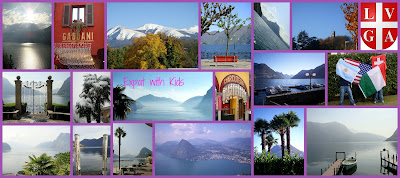Chestnuts in Ticino’s peasant world:
In rural times, like those of Ticino in past centuries, chestnuts were a staple food.
Up until the mid-20th century, chestnuts were consumed often twice a day, especially during winter. After the harvest in late autumn they were eaten either boiled or roasted on an open fire. A good part were, however, dried in a room expressly used for chestnut desiccation (the "metato", also known as a "grà") so that they would last for several months, unless milled into flour.
Nothing was waisted of the chestnut tree: its dried leaves were used as bedding for cattlesheds, while its wood either served as a valuable source of fuel or as building material (pillars, furniture, tools); given its relatively easy preservation, its fruit was used as an emergency food stock.
Chestnut forests constituted a precious resource and were therefore taken care of in compliance with specific communal and patrician regulations. Different species were planted in order to obtain nuts having specific characteristics: i.e. sweet, fit for preservation, etc.
The "maronatt" merchants who sold chestnuts in the city streets of Italy and France during winter, usually began their journey from Ticino.
The chestnut today:
In view of the socio-economic changes that have taken place over the last century, the gradual abandonment of agro-pastoral activity and depopulation of the valleys, the role of the chestnut tree and its nuts has changed considerably.
The "bread tree" - as it was known, due to its importance - is now being recognized as having played a crucial role in peasant culture of past centuries, and experts are beginning to appraise its worth as an important piece of local history.
In 1999 the Association of Swiss Italian chestnut farmers (Associazione dei castanicoltori della Svizzera Italiana) was established, with the intent of raising awareness about the history, culture, cultivation methods, consumption and trade of the chestnut, not to mention organizing the harvesting.
Furthermore, monumental chestnut trees are being inventoried and several chestnut woods are in the process of being recovered.
Touristic itineraries, including the “Sentiero del Castagno” (Chestnut Trail) in Malcantone and the “Sentée da l’albur” in the Mendrisio area, have been created.
Every year, the chesnut plays a signicant role in autumnal gastronomic events and new chesnut-based products are being developed (beer, flakes, marrons glacés, tagliatelle, flour, liqueurs and honey).
Tourists and the local population gather in October/November for the traditional chestnut festivals that take place in the squares of Ascona, Muggio Valley and other locations.
The loading of the "grà":
In late autumn, in some communes, it is possible to participated in the loading of the "grà". In a building specifically built for this purpose, the chestnuts are placed on a lattice, underneath which a fire is lit and fed for several weeks, thus allowing the fruit to dry out slowly in order to guarantee longer preservation.
Over the last few years, this traditional activity has been proposed in the Maggia Valley (Moghegno), in the Muggio Valley (Cabbio) and in Malcantone (Vezio).


No comments:
Post a Comment